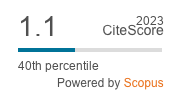Malaysian Journal of Mathematical Sciences, December 2020, Vol. 14(S)
Special Issue: 2nd International Conference on Applied & Industrial Mathematics and Statistics 2019 (ICoAIMS 2019)
Angular Kinematics Study on Parachute Landing Activity for Professional and Amateur Parachutists of Malaysian Military Using Video Processing Technique
Aziz, S., Gan, K. B., and Rambely, A. S.
Corresponding Email: [email protected]
Received date: 15 January 2020
Accepted date: 30 October 2020
Abstract:
This study focusses on the angular kinematics analysis, namely angular displacement, angular velocity, and angular acceleration among
professional and amateur paratroopers of Malaysian military using video processing technique. They are three professional and eighteen amateur parachutists who are Malaysian army participated in this study. The video data was captured based on the event "before their foot touched the ground" using three GoPro cameras at 60 fps (frame per second). The angular kinematics data has been analysed using the Quintic Biomechanics Software v26. The study of angular kinematics can help to find the optimum flexion angle and the angular displacement for the hip, knee and ankle joint during landing. The results showed that professional parachutists bent their hip and knee and flexed the balls of their feet more during landing. This produced change in angular displacement, angular velocity and angular acceleration. The optimum angular displacement are 1.31 \(rad\) (hip flexion), 0.79 \(rad\) (knee flexion) and 0.94 \(rad\) (ankle flexion). The optimum angular velocity are 0.03 \(rads^{-1}\) (hip flexion), 0.27 \(rads^{-1}\) (knee flexion) and -4.19 \(rads^{-1}\) (ankle flexion). The optimum angular acceleration are -35.17 \(rads^{-2}\) (hip flexion), 55.26 \(rads^{-2}\) (knee flexion) and -22.33 \(rads^{-2}\) (ankle flexion). The optimum angular kinematics parameters can be served as guidelines and reference for the amateur parachutists to perform the optimum landing and minimise the injury.
Keywords: Angular kinematics data, PLF technique, injury









